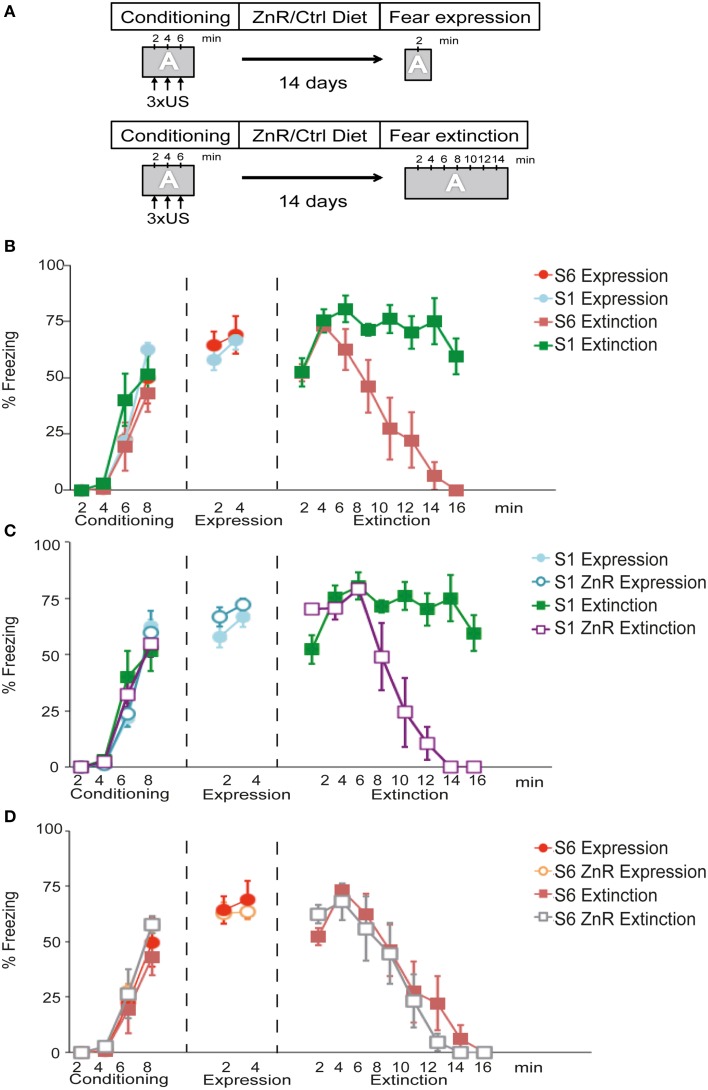Figure 2.
S1 mice exhibit compromised fear extinction upon contextual fear conditioning that can be rescued by dietary Zn restriction. (A) Schematic of experimental design. During conditioning, performed in context A (gray box), mice receive 3 mild foot shocks (US) with 120 s non-stimulus intervals. After the final US and a 120 s consolidation period, mice were returned to their home cages. They were either fed a control (Ctrl) or ZnR diet for 14 days before re-exposition to context A and fear expression/extinction monitoring. (B–D) Freezing time index during conditioning, fear expression or fear extinction of S1 and S6 mice on Ctrl or ZnR diet. Note, that fear expression and fear extinction, respectively, was tested on separate groups of animals (indicated by different symbols in the graph). Statistical tests were performed comparing all experimental groups and conditions. To improve clarity, however, trend lines were distributed into three separate diagrams. Thus, same-name data groups in (B–D) are identical. (B) S1 and S6 mice show a significant increase in freezing (n = 6/group; P < 0.001) during conditioning and similar freezing levels during fear expression training (n = 6/group; P > 0.05). During fear extinction training, S1 mice displayed significantly higher freezing levels over time than S6 mice (n = 5.6 per group; P < 0.001). (C) S1 mice on ZnR diet show a significant reduction of freezing compared to Ctrl-diet S1 mice (n = 5/group; P < 0.001), while Zn restriction had no effect on fear expression. (D) Zinc restriction does not affect freezing of S6 during conditioning, fear expression and extinction learning (P > 0.05; n = 6/group).

